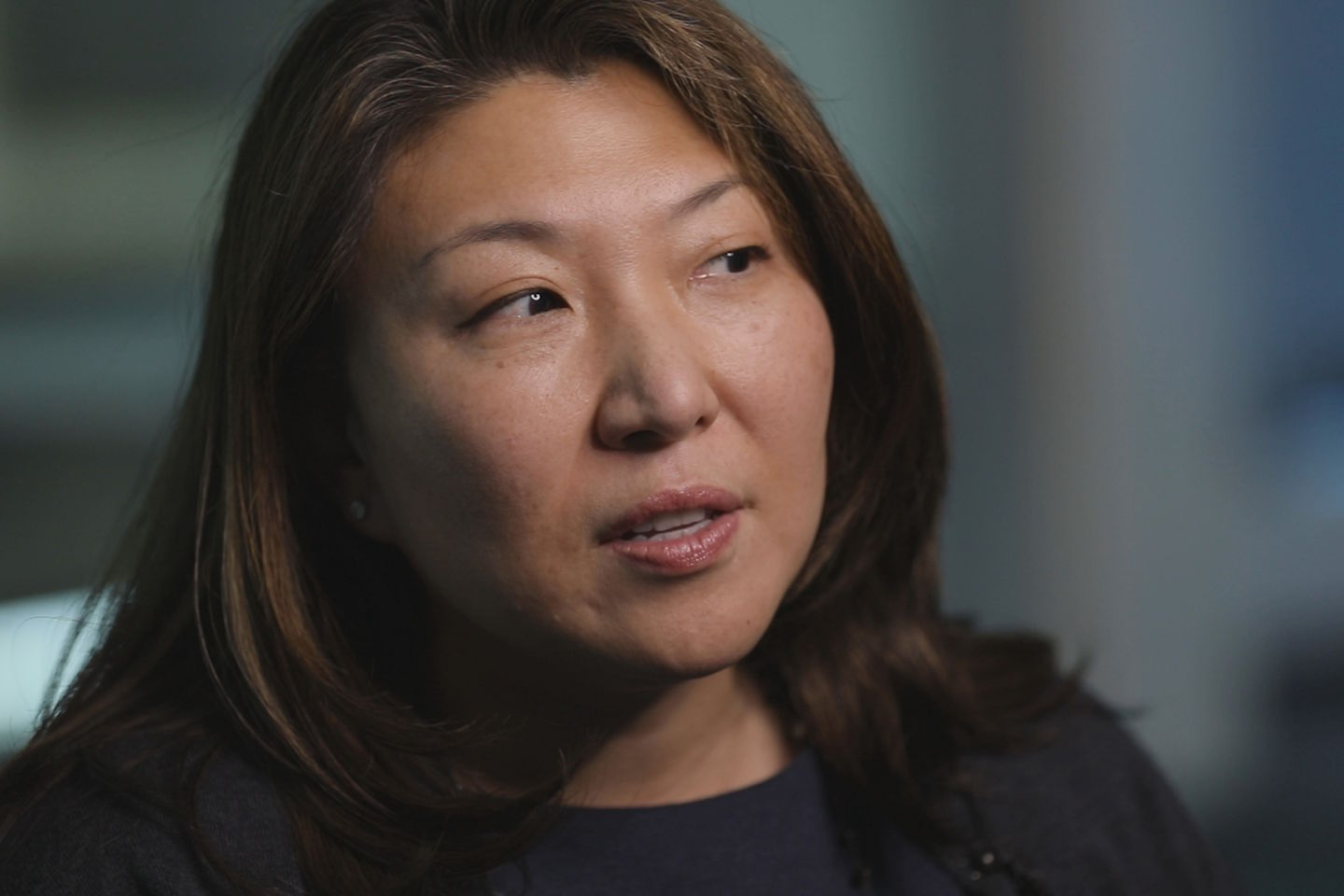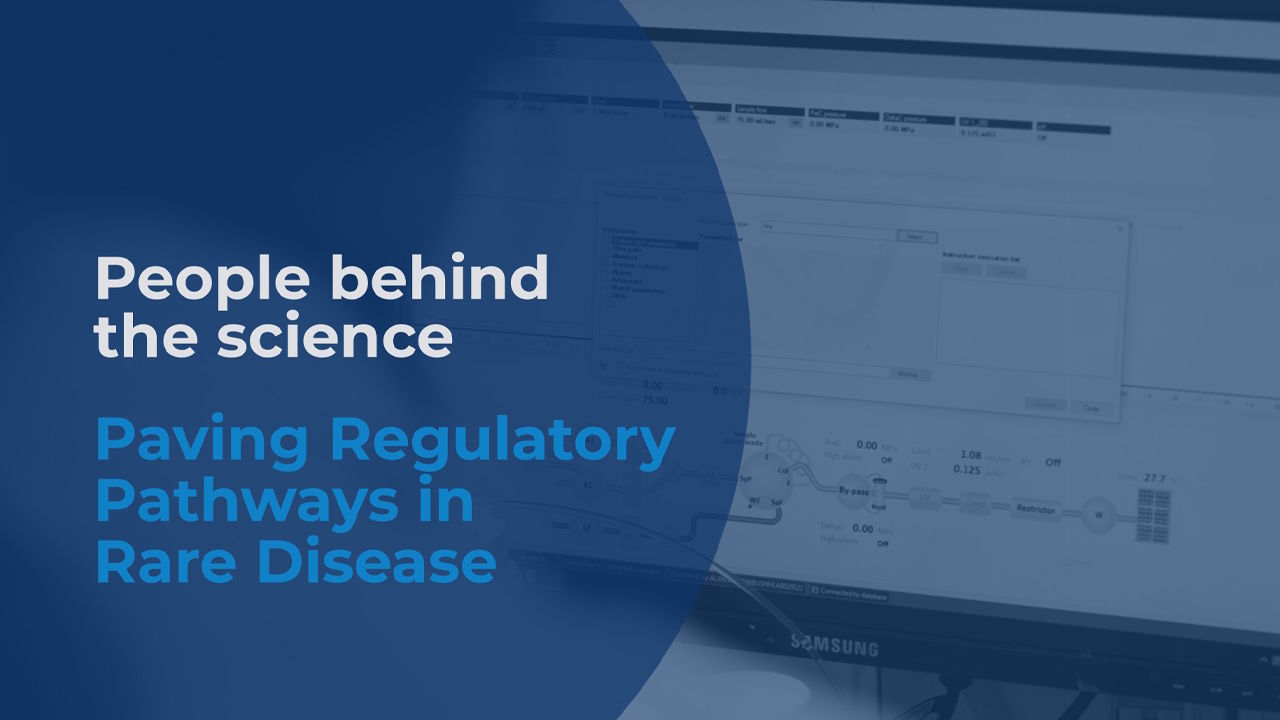- Home
- News Centre Resources
- Paving Regulatory Pathways in Rare Disease
Paving Regulatory Pathways in Rare Disease

Many rare disease medicines are often a first of their kind, and a clear roadmap for their development and approval does not exist. Navigating the complex and sometimes unprecedented regulatory environment for rare disease requires innovation, collaboration and a patient-first mindset. As Head of Regulatory Affairs, Sarah Rhee leverages her scientific background and industry expertise to forge new pathways for rare disease treatments and to improve outcomes worldwide. She shares her perspective on the role regulatory affairs plays in the drug development and commercialization process, and the potentially transformative impact of emerging technologies.
What inspired you to pursue a career in regulatory affairs?
I fell into Regulatory Affairs by accident. I started my career as a bench scientist working in the lab, but a hand injury made it difficult for me to work efficiently. I love science and really enjoyed working in research and development, so I wanted to stay in the field and explore roles outside the lab where I could continue making an impact.
There happened to be a position in international regulatory affairs where I could utilize my scientific and interpersonal communications skills. Having grown up in Korea and Japan, my background was an asset, bringing a unique perspective to this role that had a global purview.

Tell us about your role in Regulatory Affairs.
Regulatory Affairs is a multi-disciplinary function responsible for ensuring that our medicines meet regulatory standards. It’s one of the unique groups that touches every stage of drug development and commercialization, from the earliest animal studies to discussions with health authorities around the world to the manufacturing and marketing of approved medicines. Close collaboration is critical as we identify pathways to evaluate potential treatments to bring impactful options to patients across multiple geographies. As you might imagine, this landscape is constantly evolving, and it turned out to be a perfect fit for my background and interests in healthcare strategy and collaboration.
What led you to work in rare disease, specifically?
What I really love about working in rare disease is the connection to the patient.
There is a critical need for treatments in this space, yet there are many unknowns about these diseases. Our close connections with patients and advocacy groups play an important role in helping us to understand these diseases and the importance of measuring meaningful endpoints as we evaluate our investigational medicines.
Developing therapies for these conditions often requires us to step into uncharted territory. It’s our job to find new ways to educate and partner with patients, physicians and health authorities across the globe to define solutions. Each rare disease is unique and so many do not have an approved treatment option, so helping to address this unmet need is what gives me purpose and motivates me every day.
How does Alexion help shape regulatory pathways and protocols in rare disease drug development?
Alexion continues to be at the forefront of establishing regulatory pathways for rare disease therapies through our advanced use of real-world evidence, patient registries (information collected about a group of people with a common diagnosis or condition) and natural history data (patient information collected over time to understand how their disease progresses). These efforts require ongoing dialogue with regulatory agencies, a determination to innovate, and a willingness to learn and adapt, including:
- Conducting ongoing discussions with health authorities to adapt clinical trials to overcome challenges in study design, such as including videos in regulatory submissions to showcase an endpoint’s clinical value, now considered standard practice.
- Looking at how we design clinical trials to overcome challenges for small patient populations, such as using a unique open-label trial design with a historical control arm.
- Working closely with agencies to define study endpoints when no precedent exists, including exploring novel endpoints to measure efficacy across multiple disease aspects to ensure trial results are meaningful to both patients and regulators.

How does real-world data help strengthen development and regulatory processes at Alexion?
Real-world data are incredibly powerful, especially in the rare disease space. This information provides natural history data that is often lacking for rare diseases, enhances our understanding of disease pathology and gives us a richer, more complete picture of the impact therapies have on patients over time.
The insights gathered from these data sources may help inspire next-generation medicines and can be used to support ongoing discussions with health authorities to continuously improve current and investigational treatments.
Patient registries, for example, allow us to see how therapies perform in the real world, capturing data from a broader range of patients after a drug is approved. We can use this real-world evidence to refine drug labels, add new claims, or identify aspects of the disease that current treatments may not address.
How are emerging technologies, like AI, impacting regulatory affairs?
We’ve already seen the evolution with digital regulatory submissions. The next step may include using cloud technology to enable not only seamless submissions but real-time data exchange with health authorities globally.
AI has the potential to expedite processes like generating summaries or analysing datasets, which could shorten submission timelines and accelerate patient access to treatments. At Alexion, we’re exploring how to adopt these tools effectively while ensuring alignment across health authorities, to help us work faster, smarter and more collaboratively in a global environment.
What role does collaboration play in helping to create roadmaps in rare disease R&D?
Never underestimate the power and importance of creativity. While we work in a highly regulated industry, there is always an opportunity for new ideas to help us reach our end goals faster. For us, that is bringing transformative medicines to patients with unmet medical need. How we work together internally and with external partners to achieve this requires out-of-the-box thinking and creative problem solving, especially when pioneering new science to help address rare diseases.
Share This Page
More articles you may like

Media [News] • April 10, 2025
Advancing Rare Disease Research Through Patient-Centric Trial Design
As Head of Development, Regulatory and Safety at Alexion, Gianluca Pirozzi channels his life’s experience with rare disease to inform his work at Alexion, ensuring clinical programmes are fueled by a patient-focused mindset.

Article • February 24, 2025
Supporting Patients on Rare Disease Day, and Every Day
Rare Disease Day recognizes the 400 million people worldwide – and 30 million in the United States – who are living with a rare disease. While significant progress has been made in understanding rare diseases and developing treatments, the need for continued awareness, research and support is as great as ever.

Patient Support • February 05, 2025
Addressing the Unmet Needs of the Amyloidosis Community
We spoke with Cristina Quarta, Executive Medical Director, about a group of rare diseases known as amyloidosis, the medical needs within this community and how her work as a cardiologist shapes her approach to research and development (R&D) for rare cardiac conditions.

Patient Support • September 23, 2024
Shortening the Path to Diagnosis in Rare Disease
With 10,000 known rare diseases defined today, the path to diagnosis can often resemble a puzzle, with physicians as detectives searching for clues. Many physicians never encounter a rare disease beyond the pages of their medical school textbooks.

Research and Development • September 18, 2024
Getting to know Nick France, an Alexion R&D Leading Voice
To create meaningful advances in rare disease research, it takes an innovative culture, strong collaboration, and a patient-centric vision for delivering transformational solutions. At Alexion, these pillars are important to successfully develop impactful medicines for patients.

Patient Support • June 25, 2024
Getting to know Chathuri Daluwatte, an Alexion R&D Leading Voice
Artificial Intelligence (AI) is rapidly advancing and has the potential to have a transformative impact on clinical research and development (R&D).

Research and Development • June 08, 2024
Getting to know Seng Cheng, an Alexion R&D Leading Voice
There is a sense of urgency that underlies research in rare diseases, because these diseases are often rapidly progressive.

Patient Support • April 18, 2024
Getting to know Sophia Zilber, Associate Director, Statistical Programming
The voices and perspectives of patients play an essential role in rare disease research and development (R&D).

Patient Support • April 16, 2024
Getting to know Banu Sankaran, an Alexion R&D Leading Voice
Diagnostics and artificial intelligence (AI) systems are transforming research and development (R&D) in the healthcare industry.
